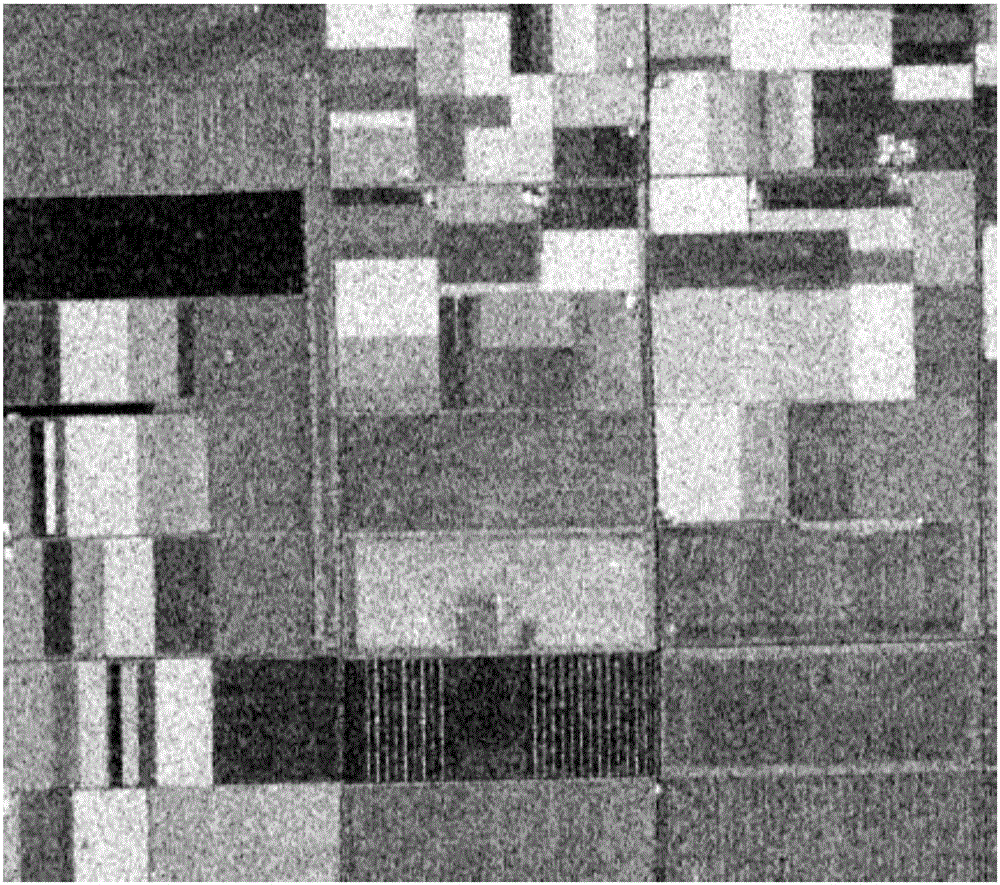Polarization SAR image classification based on CNN and SVM
An image and classifier technology, applied in the field of image processing, can solve the problems of small number of features, underutilization of polarization information, arbitrary division of regions, etc., and achieve the effect of improving classification accuracy
- Summary
- Abstract
- Description
- Claims
- Application Information
AI Technical Summary
Problems solved by technology
Method used
Image
Examples
Embodiment 1
[0036] The present invention is a kind of polarization SAR image classification method based on CNN and SVM, see figure 1 , the polarization SAR image classification includes the following steps:
[0037] Step 1, input the filtered polarimetric SAR image to be classified, see figure 2 , to obtain the polarization coherence matrix T, the polarization SAR image is a Dutch farmland map, mainly including rapeseed, sugar beet, potato, alfalfa, grassland, wheat, pea and other crops and a piece of bare land, different colors in the picture represent different category, this example is to classify this polarimetric SAR image, and the polarimetric SAR image to be classified itself has a reference map of the distribution of ground objects, see image 3 In the figure, some pixels are labeled with categories; the image filtering to be classified is mainly polarized refined Lee filtering.
[0038] Step 2, based on the polarization coherence matrix T of the polarization SAR image, the or...
Embodiment 2
[0052] The polarimetric SAR image classification method based on CNN and SVM is the same as embodiment 1, wherein the original feature of each pixel of the image obtained in step 2 is carried out according to the following steps:
[0053] 2a) Since the polarization coherence matrix T has rich phase and amplitude information about the radar target, and is a positive semi-definite Hamiltonian matrix, the diagonal elements of the polarization coherence matrix T with a dimension of 3×3 can be extracted, And the real part and imaginary part of the 3 elements except the diagonal elements in the upper triangle position, each pixel has a total of 9-dimensional features, expressed in the form of a 3×3 matrix as
[0054] T 11 T 22 T 33 ...
Embodiment 3
[0058] The polarization SAR image classification method based on CNN and SVM is the same as embodiment 1-2, wherein the repeated training of the AE network in step 5 to obtain the initial CNN convolution layer parameters is carried out according to the following steps:
[0059] 5a) Since the convolutional layer of CNN involves the local perception area, it is necessary to randomly select N×N size image blocks in each training sample, and the size of the image blocks selected in the present invention is 5×5;
[0060] 5b) Then use the image blocks selected in 5a) to train the AE network. The AE network has 3 layers: input layer, hidden layer, and output layer. Its working principle is to use the output layer to approach the input layer to obtain another representation of the input layer features. , that is, the hidden layer feature; the number of convolution kernels of the CNN convolution layer is set to 20 in the present invention, which is consistent with the number of neural u...
PUM
 Login to View More
Login to View More Abstract
Description
Claims
Application Information
 Login to View More
Login to View More - R&D
- Intellectual Property
- Life Sciences
- Materials
- Tech Scout
- Unparalleled Data Quality
- Higher Quality Content
- 60% Fewer Hallucinations
Browse by: Latest US Patents, China's latest patents, Technical Efficacy Thesaurus, Application Domain, Technology Topic, Popular Technical Reports.
© 2025 PatSnap. All rights reserved.Legal|Privacy policy|Modern Slavery Act Transparency Statement|Sitemap|About US| Contact US: help@patsnap.com



